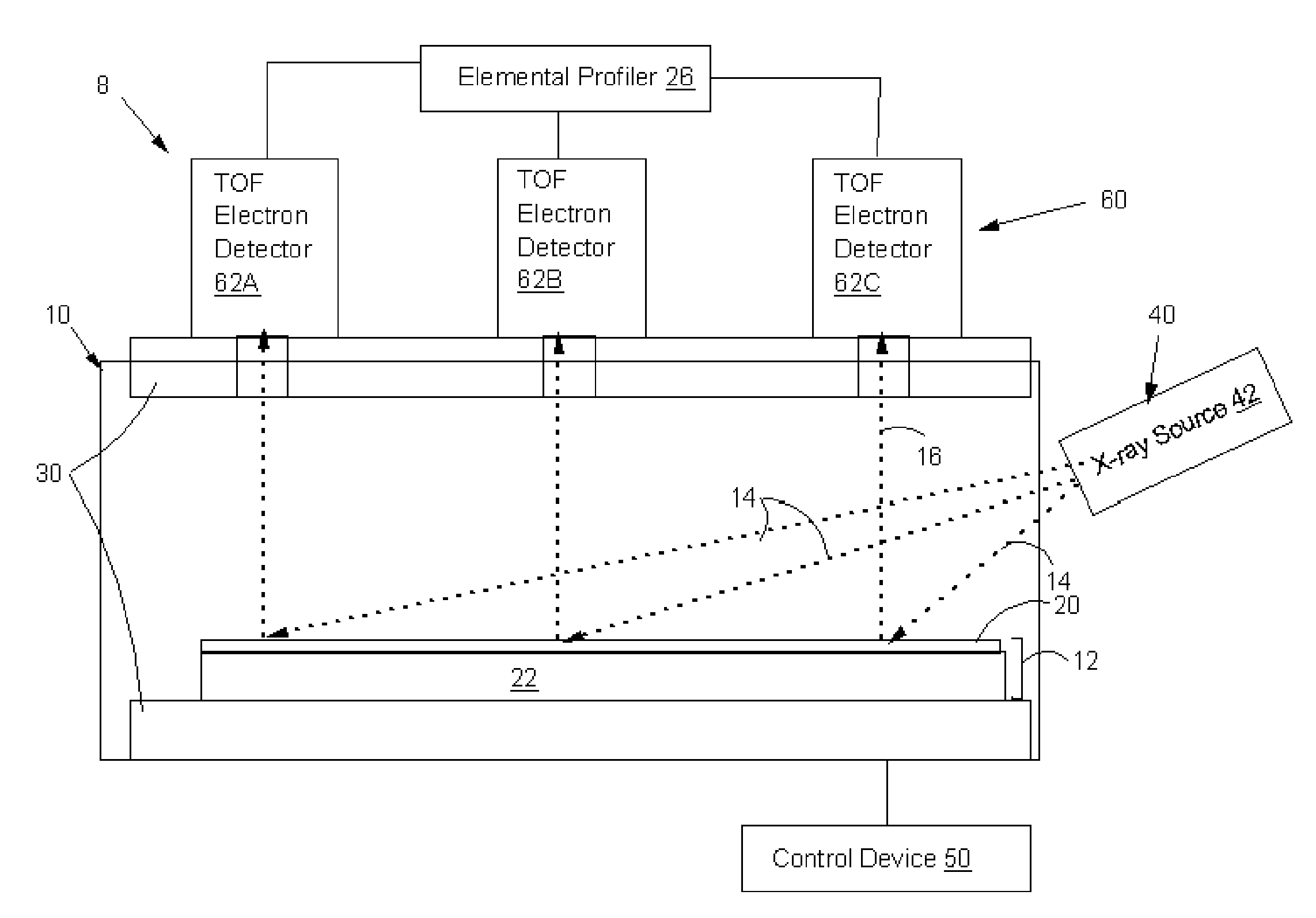Non-destructive in-situ elemental profiling
- Summary
- Abstract
- Description
- Claims
- Application Information
AI Technical Summary
Benefits of technology
Problems solved by technology
Method used
Image
Examples
Embodiment Construction
[0016] With reference to the accompanying drawing, FIG. 1 illustrates an elemental profiling system 8 according to the invention. As shown in FIG. 1, the invention determines an elemental profile, e.g., of a composition, of a layer in a set of layers undergoing a process in situ of a process chamber 10. In accordance with the invention, a layered material 12 including a topmost layer 20, e.g., a semiconductor, dielectric, or conductor of a semiconductor wafer, is irradiated with an x-ray beam 14, which comprises a plurality of photons, and a photoelectron emission 16 is caused in response to this irradiation. Photoelectron emissions 16 have signals with energy levels unique to the material of layer 20 from which the photoelectrons are emitted. The material can be a compound or an element, but the material of layer 20 and a set of layers (layered material 12) thereabout (under, adjacent or over) differ only in stoichiometry. Because photoelectrons have a short mean free path, photoel...
PUM
 Login to View More
Login to View More Abstract
Description
Claims
Application Information
 Login to View More
Login to View More - R&D
- Intellectual Property
- Life Sciences
- Materials
- Tech Scout
- Unparalleled Data Quality
- Higher Quality Content
- 60% Fewer Hallucinations
Browse by: Latest US Patents, China's latest patents, Technical Efficacy Thesaurus, Application Domain, Technology Topic, Popular Technical Reports.
© 2025 PatSnap. All rights reserved.Legal|Privacy policy|Modern Slavery Act Transparency Statement|Sitemap|About US| Contact US: help@patsnap.com


